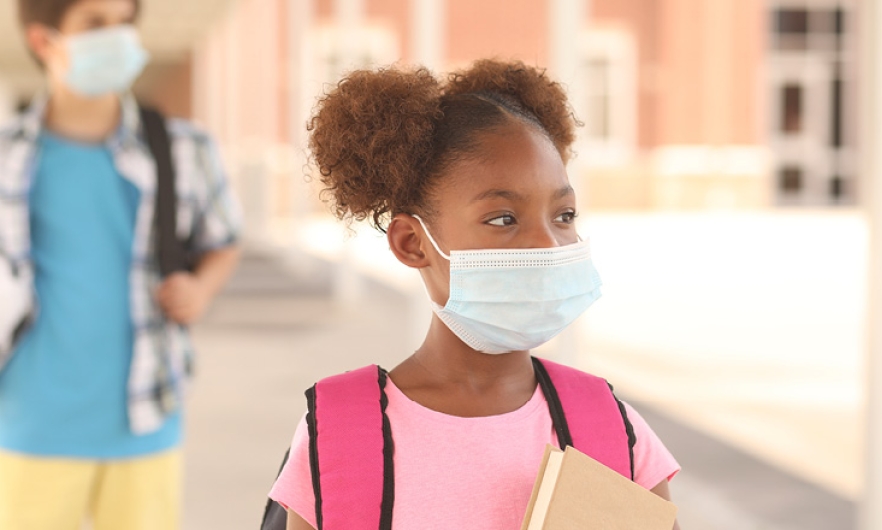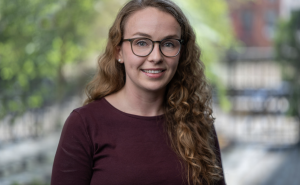The Important and Elusive Science Behind Safely Reopening Schools

Is it safe to reopen schools in my community?
“That’s the million dollar question,” says Steve Beatty, secretary-treasurer, New Jersey Education Association, the state teachers’ union. “I’m not a scientist or doctor, but we watch all the science and what's going on in the other states—where we've seen Indiana, Florida, Texas, Georgia have these major problems. I don't know if anyone has the magic number of ‘if this, then.’”
If this average of daily cases or test positivity, then schools can open. Or if this particular data point, then they must remain fully online.
The “magic number” would make things so much simpler.
Teachers want it to gauge their personal risk in the classroom. School system leaders want it to inform their decisions on instructional modes. Parents want it to know if it’s safe to send their kids to school.
But, there’s no consensus on what it should be.
The paucity of evidence and great variation in COVID-19 statistics—as well as the diversity in social and economic needs in communities—make formulating a specific threshold a fraught challenge for public health professionals.
“Unfortunately, I think the lack of a single metric makes it feel like we’ve just kind of left the school systems out hanging out on their own, [but] the problem is we don't really know it,” says Jennifer Nuzzo, an epidemiologist and senior scholar with the Johns Hopkins Center for Health Security.
Keeping children at home in the midst of a pandemic would be the safest step, but it’s not always practical or even beneficial for them. “What we're talking about with respect to opening schools is trying to minimize harms and maximize benefits. And deciding what that threshold is—that's not entirely clear—and for some communities the harms are different.”
For example: Remote education may work for some communities, while others with lots of frontline workers need to have children in school, she says. Still others may depend on meals programs or other services provided at school for their children.
Patchwork Responses
In the absence of a single national threshold, the US has seen a patchwork of strategies for the nation’s 56 million students—with mixed results. Los Angeles and San Diego public schools decided last month to open all-virtual. As have many Philadelphia area schools. And when New York City announced plans for a mix of onsite and virtual instruction, more than 26% of the system’s 1.1 million students said they would choose to be all-virtual.
And consider Cherokee County, north of Atlanta, which opened schools on August 3. By August 13, nearly 1,200 students and staff members had been ordered to quarantine.
School System Needs
In Indiana, Secretary of Education Jennifer McCormick says her department, which oversees the education of more than 1 million students, is fielding requests about when face-to-face learning is safe.
“We don’t tell them, ‘Yes, open’ [or] don’t open,’” she says. Instead, her team is referring superintendents to their local health departments for guidance.
Some school superintendents are getting clear instructions from health departments on data thresholds that would trigger changes in instructional modes (from virtual to hybrid and fully onsite). But most aren’t getting the guidance they need—a situation often replayed in other states.
“We’re told how to handle measles. We’re told how to handle lice. We’re told how to handle a flu, but we’re getting very limited, direct specifics on what those [COVID-19] thresholds are, which, you know, that’s frustrating,” she says.
Useful Metrics
What metrics should guide decisions on school openings?
The biggest factor determining risk in schools is what the virus is doing outside them, says Caitlin Rivers, a senior scholar with the Johns Hopkins Center for Health Security and a co-author of a National Academies of Sciences, Education, and Medicine report on reopening schools published in mid-July.
The number of new daily cases over the last couple weeks is important to know, she says.
The percent of coronavirus tests that are coming back positive is another valuable metric. “In places where you have a very high test positivity, like well into the double digits, that suggests that the outbreak is very widespread and that testing isn’t keeping up,” Rivers advises.
Other COVID-19 metrics that experts are following include hospitalizations, ICU beds, and deaths.
Regardless of the metric, it’s important to see how the numbers are trending over time, Rivers says, and not to be guided by anomalies like a sudden single-day spike or drop in new cases. Data reported on Mondays, for example, are often much lower than other days. “So, two weeks gives you a good sense of how things are looking overall and what direction they're headed. Are they getting worse, or are they getting better?” Rivers says.
Different Approaches
Some approaches have surfaced recently that are largely based on the average number of new cases per day or the average test positivity. The Harvard Global Health Institute, the Mitre Corporation, the University of Nebraska Medical Center College of Public Health and other organizations have published guidelines. Mitre, for example, advises that fewer than one new case per day per 100,000 population has allowed other countries to open their schools successfully. And some states have also released guidelines for school reopening. Pennsylvania, for example, has announced that fewer than 10 new cases per 100,000 population in the previous 7 days would make fully onsite instruction possible.
“They’re all reasonable. We still don’t really have any particular evidence to say, ‘yes, this but not this,’” Nuzzo says. What’s needed is a national authoritative body that can hash out the evidence, she says.
Don’t Forget the Benefits
The obsession about risks for schoolchildren is understandable, of course: No one wants to endanger children’s lives. But Americans have been maddeningly inconsistent in their approaches to risk, Nuzzo cites an example: Closing schools but leaving open restaurants and bars (which are potentially riskier environments).
She also notes that closed schools have led parents desperate to keep their jobs to take their children to all-day day care or even improvised classes led by teachers from public schools. “Not every parent has those resources, and are we now setting up now parallel educational systems?” Nuzzo says. “In an effort to bring risks to zero, [are we] in effect, not actually reducing risks all that much?”
Rivers adds that the focus on risk has obscured the other part of the equation: the benefits.
“We know schools that are critically important because they educate our children, but they also provide a number of really important services that particularly support vulnerable children and families,” Rivers says. “And so, it's really important that we continue to provide those important services to families and communities.”
Brian W. Simpson is editorial director at the Johns Hopkins Bloomberg School of Public Health.





